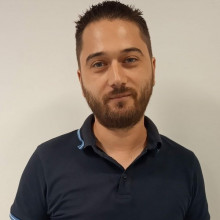
STOP project aims at developing antimicrobial and antiviral nanocoatings that can be flexibly or permanently applied to high-touch surfaces. These nanocoatings will be derived from a combination of inorganic nanoparticles, antimicrobial peptides and nanoscale laser surface patterning. The nanocoatings will be thoroughly characterised for their efficacy, using both existing international standards and improved testing methods developed within the project (the new testing methods will be proposed to standards agencies for adoption). Several different active substances will be explored (i) to allow formulation in highly flexible, sprayable, and long-lasting coatings, (ii) provide broad spectrum antimicrobial antiviral activity, and iii) reduce the chances of the development of resistance. To this end, the mode-of-action, and the risk of selection for antimicrobial resistance in bacteria and viruses will be assessed.
The flexible nanocoatings will provide a long-lasting (30 days) reduction in bioburden that resembles standards set for microbial colonization of surfaces in hospitals, which can only be reached after intense surface disinfection or permanent introduction of known antimicrobial material such as copper. This effect will be studied in a real-life intervention trail and with epidemiological models. The developed nanocoatings are expected to lead to significant reductions in infectious diseases transmitted from high-touch surfaces, healthcare cost savings, reduction in environmental pollution by disinfectants, and increased preparedness of the EU public health system to future pandemics. The safety of the nanomaterials will be backed up by human and environmental toxicity studies and life cycle analyses. From the beginning, attention will be paid to end-user acceptance, manufacturing scalability, and short-term exploitation by SMEs
Principal Investigator
Research Associates
Students
Alumni















Funding







